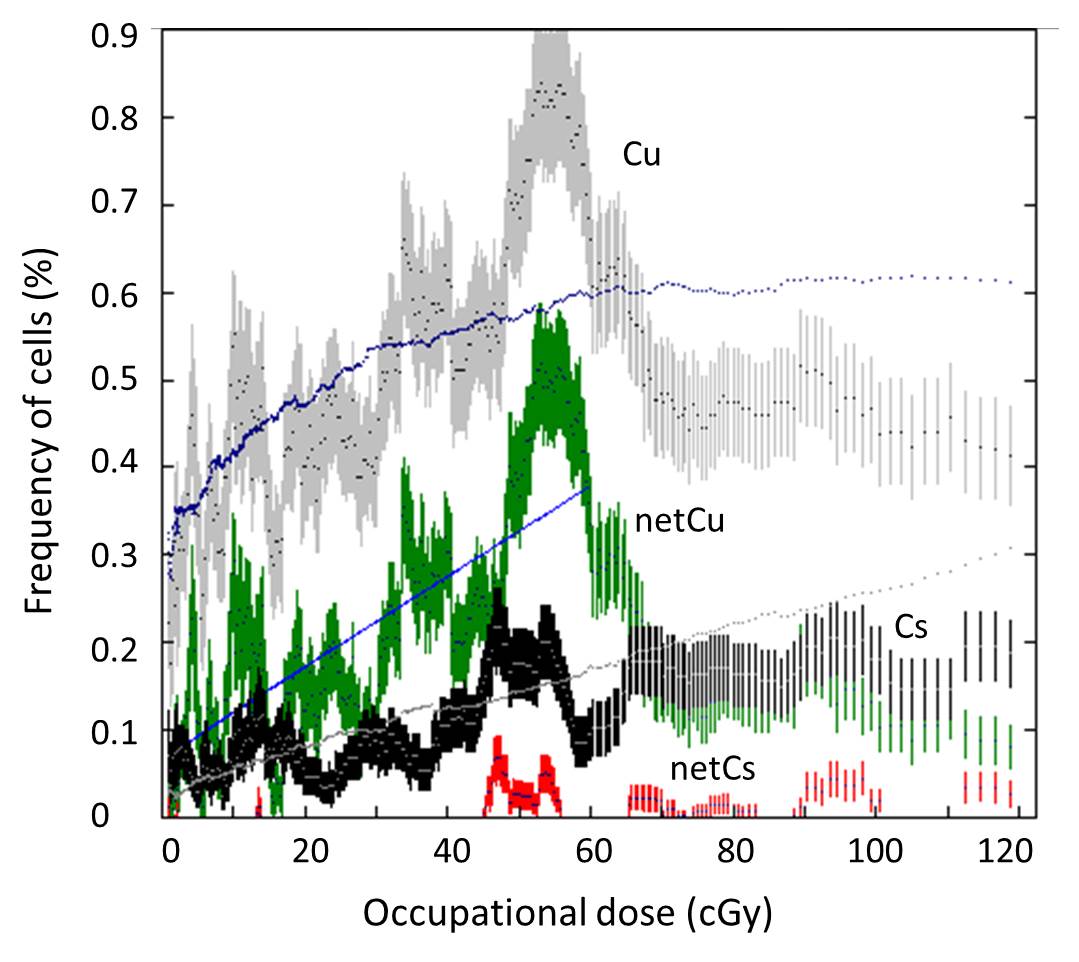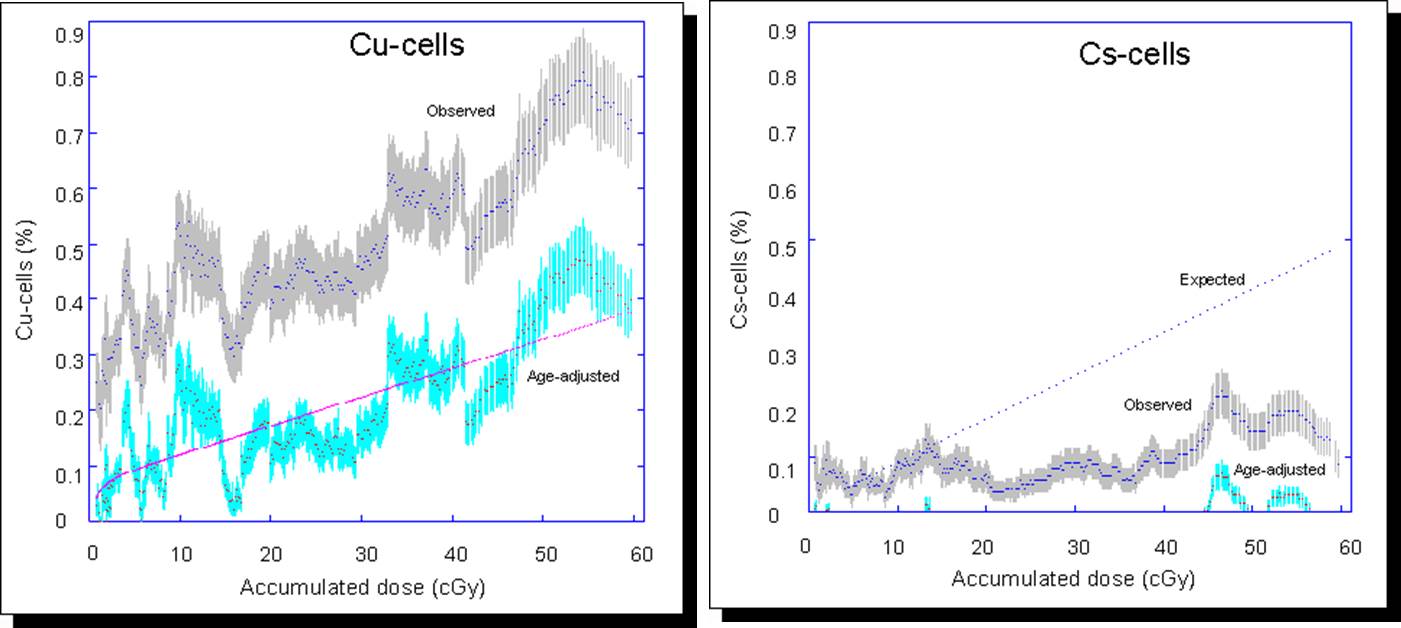(Moving window averaging with step of 5 workers)
(Workers with D2>20 rad were excluded)
Dose uncertainty is large before the personal dose monitor systems are introduced (i.e., 1956-1960).
The accumulated dose of about 60 cGy corresponds to the time of the introduction of dose monitoring system.
The chromosome aberration frequencies in persons after the introduction of dosimeters are shown in the figures presented below.The increment of aberrations is apparent only in the Cu cells. But, that of Cs cells is absent or very small if any.
Sasaki, M. S. (2003):
Radioadaptive response and genomic instability: a phenotypic dichotomy of gene-environment interaction. In, Shibata, Y., Yamashita, S., Watanabe, M. and Tomonaga, M. eds. “Radiation and Humankind”. Elsevier International Congress Series 1258, pp.11-19.
goto ¤ Home

